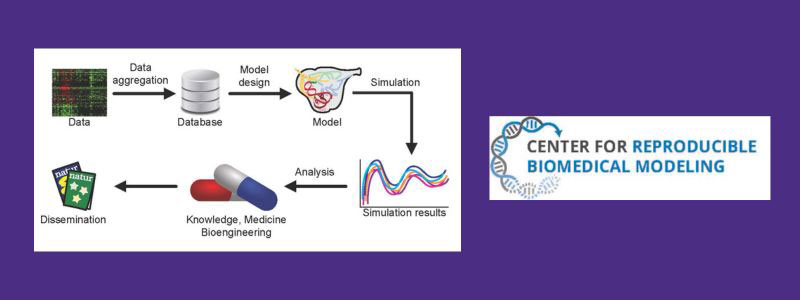The National Institute of Biomedical Imaging and Bioengineering has committed a multi-million-dollar grant to support the Center for Reproducible Biomedical Modeling (CRBM) at the University of Washington. Under the leadership of UW Bioengineering Professor, Herbert Sauro, the grant will allow CRBM to continue its innovative work for an additional five years. This significant investment underscores the importance of the Center’s mission to enhance the reliability and reproducibility of biomedical models.
CRBM is a collaborative, multi-institutional project, drawing together expertise from several institutions including the University of Connecticut, University of Wisconsin-Madison and the University of Auckland. Within the University of Washington, key contributions come from the Department of Biomedical Informatics and Medical Education, and the UW eScience Institute. This partnership harnesses the strengths of leading investigators to advance the development of multi-scale and integrative computer models that represent both disease and non-disease states.
This support from the NIH will enable us to continue our critical work in improving biomedical modeling. Our collaborative efforts will not only advance scientific understanding but also enhance the tools available to researchers across the globe. – Herbert Sauro
A key objective of the Center is to improve the credibility, understanding, reproducibility and extensibility of these models. This goal is encapsulated in their acronym “CURE,” reflecting their commitment to refining the models used by biomedical researchers. By doing so, CBRM aims to foster the development of more credible predictive models that can significantly impact biomedical research and clinical applications.
Beyond its core research and technology development, the Center is deeply engaged with the broader scientific community. It collaborates on various research projects, provides vital services to biological researchers and offers numerous dissemination and education opportunities. These efforts are crucial in promoting the adoption of reproducible research practices and enhancing the overall quality of biomedical research.
Herbert M. Sauro, the principal investigator and director of CBRM, emphasizes the transformative potential of this renewed funding. “This support from the NIH will enable us to continue our critical work in improving biomedical modeling,” Sauro says. “Our collaborative efforts will not only advance scientific understanding but also enhance the tools available to researchers across the globe.”
With this renewed funding, the Center for Reproducible Biomedical Modeling is poised to make significant strides in the realm of biomedical research, ensuring that models used in the field are robust, reliable and reproducible. This will ultimately lead to better predictive capabilities and more effective treatments for a variety of diseases, benefiting both the scientific community and public health at large.


